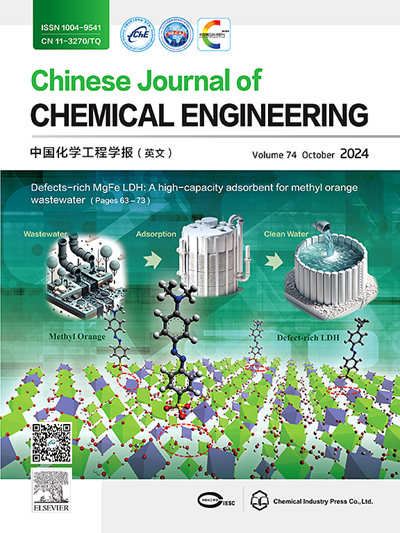二级级联微反应器中用于手性羟基丁酸连续生产的氢键有机框架包封酶的可控合成
IF 3.7
3区 工程技术
Q2 ENGINEERING, CHEMICAL
引用次数: 0
摘要
构建一种稳定蛋白质构象、诱导高嵌入效率和获得低传质阻力的框架载体是固定化酶发展的迫切问题。氢键有机框架在酶包埋方面具有广阔的应用前景。事实上,不需要金属介入,并且hof具有优越的生物相容性,并且可以在介孔通道中自由地与底物接触。本文提出了一种方便的原位生长方法,用于包封在HOF中的醇脱氢酶的自组装。在温和的条件下(水相和环境温度)快速合成了微米级生物催化复合材料,包埋率可控。酶包封效率高达59%,保留了高结晶度和周期性排列通道。这种生物复合材料提高了酶对酸碱环境的耐受性,并在涉及NADH辅酶的5个间歇加氢循环后保持了81%的初始活性。在此基础上,进一步开发了两级联微化学系统,实现了手性羟基丁酸(R-3-HBA)的连续化生产。本文章由计算机程序翻译,如有差异,请以英文原文为准。
Controllable synthesis of hydrogen-bonded organic framework encapsulated enzyme for continuous production of chiral hydroxybutyric acid in a two-stage cascade microreactor
Constructing a framework carrier to stabilize protein conformation, induce high embedding efficiency, and acquire low mass-transfer resistance is an urgent issue in the development of immobilized enzymes. Hydrogen-bonded organic frameworks (HOFs) have promising application potential for embedding enzymes. In fact, no metal involvement is required, and HOFs exhibit superior biocompatibility, and free access to substrates in mesoporous channels. Herein, a facile in situ growth approach was proposed for the self-assembly of alcohol dehydrogenase encapsulated in HOF. The micron-scale bio-catalytic composite was rapidly synthesized under mild conditions (aqueous phase and ambient temperature) with a controllable embedding rate. The high crystallinity and periodic arrangement channels of HOF were preserved at a high enzyme encapsulation efficiency of 59%. This bio-composite improved the tolerance of the enzyme to the acid-base environment and retained 81% of its initial activity after five cycles of batch hydrogenation involving NADH coenzyme. Based on this controllably synthesized bio-catalytic material and a common lipase, we further developed a two-stage cascade microchemical system and achieved the continuous production of chiral hydroxybutyric acid (R-3-HBA).
求助全文
通过发布文献求助,成功后即可免费获取论文全文。
去求助
来源期刊

Chinese Journal of Chemical Engineering
工程技术-工程:化工
CiteScore
6.60
自引率
5.30%
发文量
4309
审稿时长
31 days
期刊介绍:
The Chinese Journal of Chemical Engineering (Monthly, started in 1982) is the official journal of the Chemical Industry and Engineering Society of China and published by the Chemical Industry Press Co. Ltd. The aim of the journal is to develop the international exchange of scientific and technical information in the field of chemical engineering. It publishes original research papers that cover the major advancements and achievements in chemical engineering in China as well as some articles from overseas contributors.
The topics of journal include chemical engineering, chemical technology, biochemical engineering, energy and environmental engineering and other relevant fields. Papers are published on the basis of their relevance to theoretical research, practical application or potential uses in the industry as Research Papers, Communications, Reviews and Perspectives. Prominent domestic and overseas chemical experts and scholars have been invited to form an International Advisory Board and the Editorial Committee. It enjoys recognition among Chinese academia and industry as a reliable source of information of what is going on in chemical engineering research, both domestic and abroad.
 求助内容:
求助内容: 应助结果提醒方式:
应助结果提醒方式:


